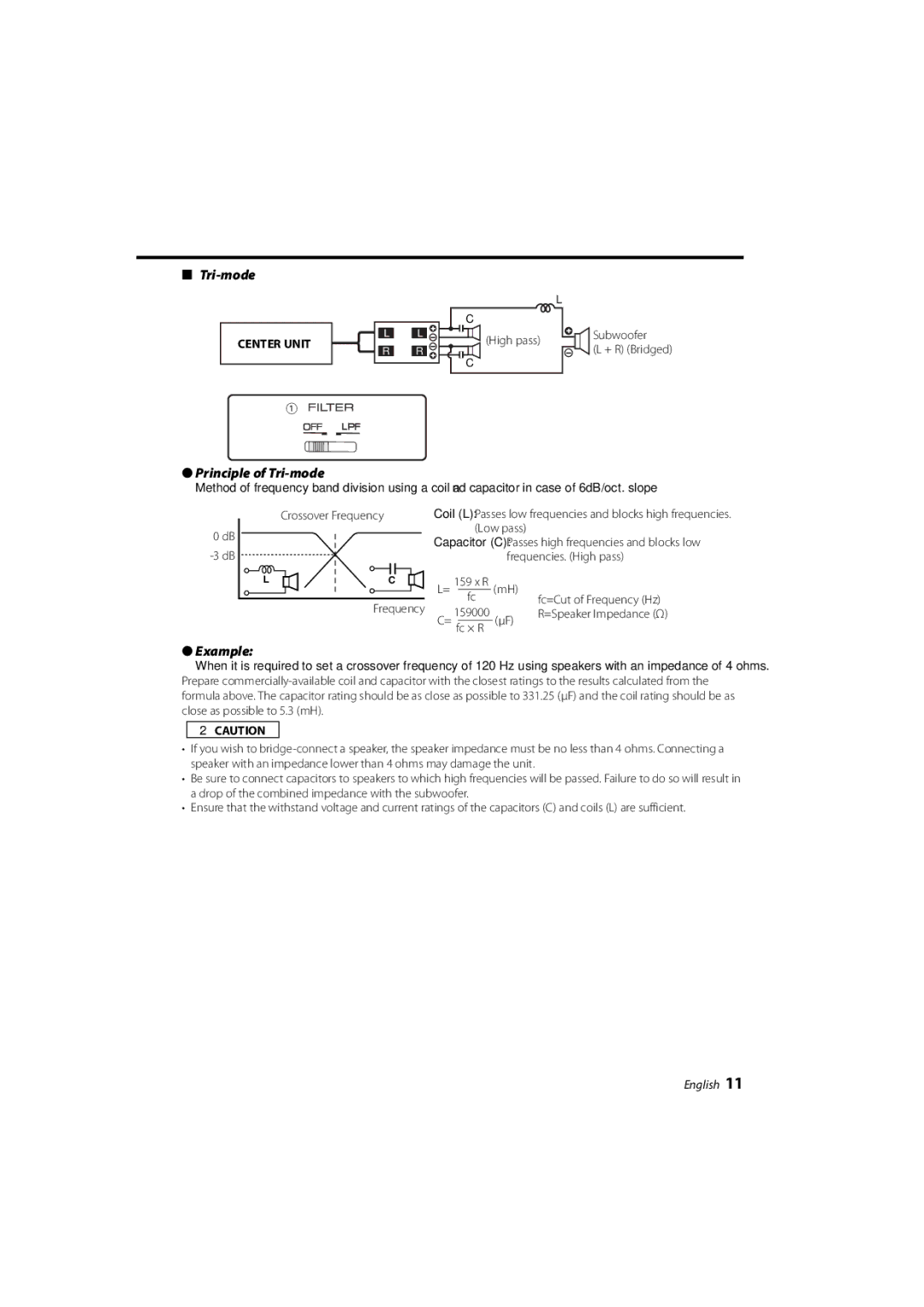KAC-6203 specifications
The Kenwood KAC-6203 is a compact and powerful car amplifier designed to enhance the audio experience in vehicles. Known for its reliability and performance, this 2-channel amplifier boasts several key features and technologies that cater to both casual listeners and audio enthusiasts alike.One of the standout characteristics of the KAC-6203 is its compact size, which allows for flexible installation in various vehicle types without occupying excessive space. Despite its small footprint, it delivers an impressive power output of 60 watts RMS per channel at 4 ohms, and up to 90 watts RMS at 2 ohms. This makes it ideal for powering a pair of high-quality speakers while maintaining clear sound fidelity, even at higher volumes.
Equipped with a MOSFET power supply, the Kenwood KAC-6203 ensures efficient performance and improved thermal management. This technology enables the amplifier to handle demanding audio signals, contributing to a more dynamic and rich listening experience. Additionally, the amplifier features an adjustable low-pass filter, allowing users to easily tailor the output to match their specific audio setup and preferences. This is especially beneficial for those who want to integrate subwoofers into their system, as it helps in controlling the frequencies sent to the lower-end speakers.
Another notable feature is the amplifier's compact chassis, which not only aids in installation but also includes built-in protection circuits that prevent overheating and short circuits, ensuring long-lasting performance and durability. The KAC-6203 also includes a variable input sensitivity control, allowing for seamless integration with various head units and enabling users to optimize sound quality based on their source.
The KAC-6203 is designed with aesthetic appeal in mind, featuring a sleek black finish that complements most modern vehicle interiors. The overall build quality is robust, and the amplifier’s intuitive layout makes it easy to connect and adjust.
In summary, the Kenwood KAC-6203 is a versatile car amplifier that combines power, efficiency, and usability. With features like MOSFET power supply, adjustable filters, and reliable protection mechanisms, it stands out in the market as an excellent choice for anyone looking to enhance their car audio system without taking up too much space or budget. Whether you're upgrading existing speakers or installing a new sound system, the KAC-6203 delivers a significant audio improvement.

